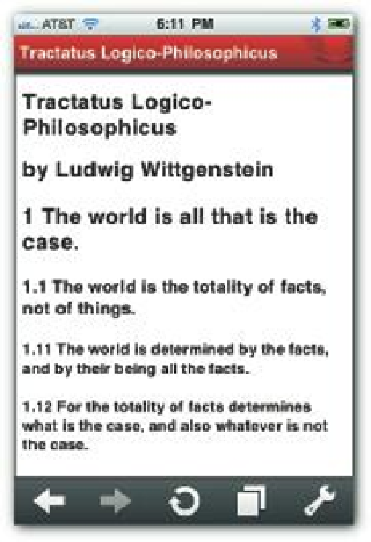HTML and CSS Reference
In-Depth Information
If we look at the Web page, we can see where the dif erent
h
elements give the parts dif erent
sizes, but we don't see the indentations Wittgenstein used in his original writings. Figure 3-6
shows the Web page on a mobile phone — whatever else you think of Wittenstein, his style
sure works well for mobile screens.
51
Figure 3-6: Outline format using
<h>
tags on the iPhone.
If you look at the original Wittgenstein, you'll i nd that his style of writing used an indented
outline that appeared as the following:
1 h e world is all that is the case.
1.1 h e world is the totality of facts, not of things.
1.11 h e world is determined by the facts, and by their being all the facts.
1.12 For the totality of facts determines what is the case, and also whatever
is not the case.
We can i x that if we want by adding indents to the
<h..>
tags. We could do this by adding
margins using CSS3 as you'll see in the next section. However, the purpose of the
h
element
and the
<hgroup>
is not to set indents but to help with more general outlines. h e
<hgroup>
tag sets the highest level
<h..>
tag in the
hgroup
container as the outline
element. For example, since Wittenstein wrote Tractatus Logico-Philosophicus wholly in
outline, his entire work using the
hgroup
element would look exactly like the outline in his
actual Abstract to the work.
























